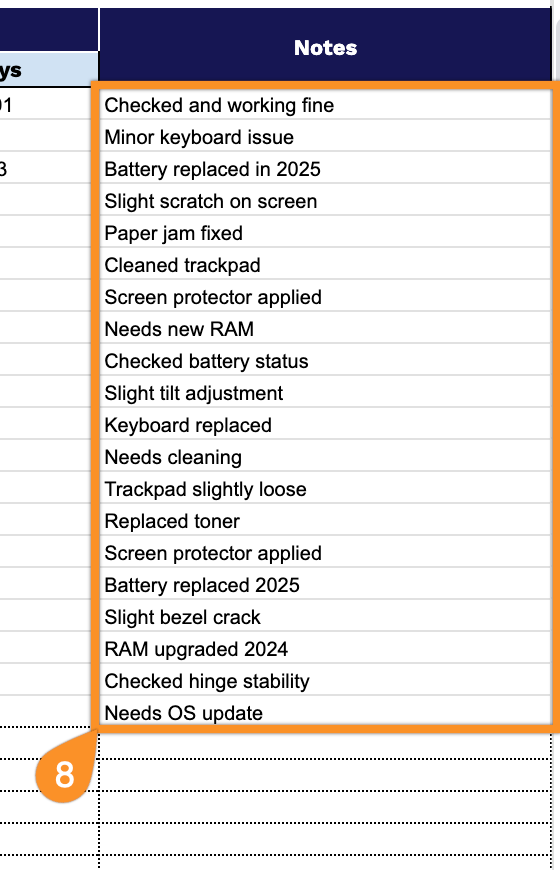Managing your organization’s computer equipment doesn’t have to be a headache. Whether you’re running a small business or handling IT for a larger company, keeping track of laptops, desktops, and other hardware is essential for staying on budget and maintaining everything properly.
Our free computer inventory template makes this process straightforward and works with Google Sheets, Excel, or as a printable PDF.
You can easily customize it to track whatever details matter most to your setup, from purchase dates and warranty information to current locations and user assignments.
Quick Jump
ToggleWhat Is a Computer Inventory Spreadsheet?
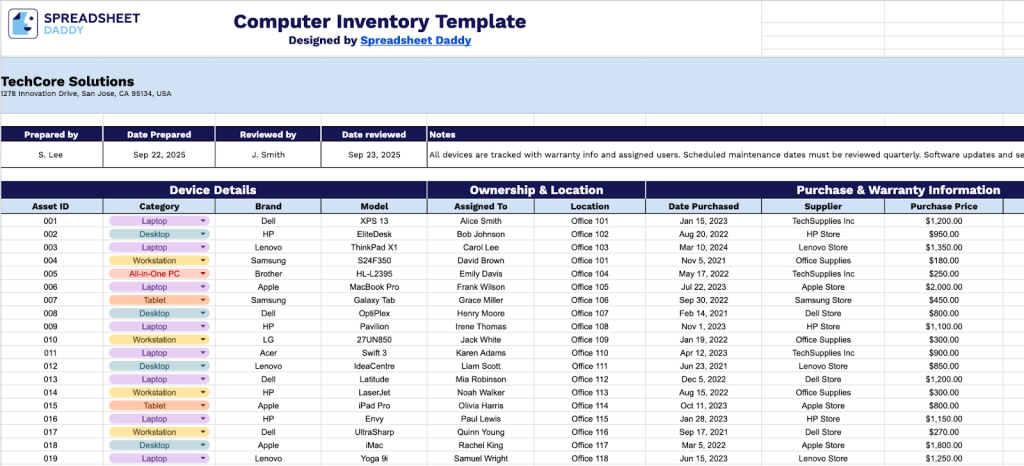
A computer inventory spreadsheet is a simple way to keep track of all the computers and related equipment you have, whether for business or personal use.
Having this information organized in one place makes it much easier to know what you own, plan for upgrades, and handle warranty claims when something breaks down.
Download Spreadsheet Daddy’s Free Computer Inventory Management Spreadsheet
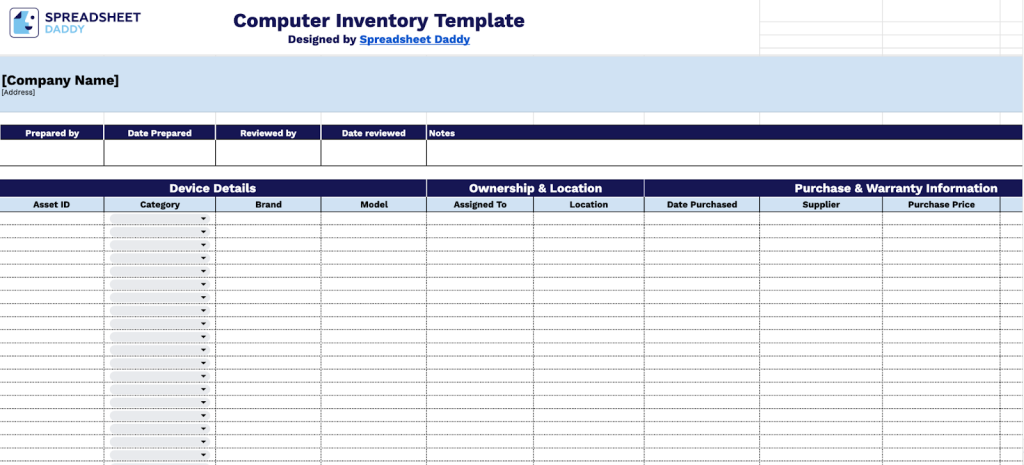
Our computer inventory template helps organizations keep track of all their computer equipment in one organized place.
You can adapt the template to suit your business by adding new columns or taking out ones you don’t need.
What’s included
- Complete device information: Track all your computer equipment with fields for Asset ID, Category, Brand, Model, the person assigned to it, and its location, so you always know what devices you have and where they are.
- Purchase and warranty details: Keep records of when equipment was purchased, from which supplier, the cost, and warranty information to help you manage your IT budget and determine what’s covered if something breaks.
- Maintenance and service tracking: Monitor the condition of each device, schedule upcoming service dates, and track software updates to ensure your equipment runs smoothly and avoids unexpected downtime.
- Network and security records: Document IP addresses, security software status, and license keys for each device to maintain your network security and ensure you’re compliant with software licensing requirements.
- Professional template layout: Ready-to-use format with space for your company information, who prepared and reviewed the inventory, dates, and notes to keep your documentation organized and professional.
How to Use Our Computer Inventory Spreadsheet Template
1. Access this template by generating a personal copy within Google Sheets or by downloading the Excel or PDF versions for offline use.
2. Enter business details, including name and street address, with inventory coordinator particulars. Record the completion date and manager’s name alongside the inspection date, capturing additional information in the Notes section.

3. Complete the Device Details section by entering all essential hardware identification and classification information:
- Asset ID: Enter the unique identifier assigned to track this specific computer or device in your inventory system.
- Category: Specify the type of equipment being cataloged (desktop, laptop, server, tablet, workstation, etc.).
- Brand: Record the manufacturer name of the device (Dell, HP, Lenovo, Apple, etc.).
- Model: Include the specific model number or name provided by the manufacturer for precise identification.

4. Fill in the Ownership & Location section by documenting assignment and placement details:
- Assigned To: Enter the name of the employee or department currently responsible for this device.
- Location: Record the physical location where the device is stationed (building, floor, room number, or department).
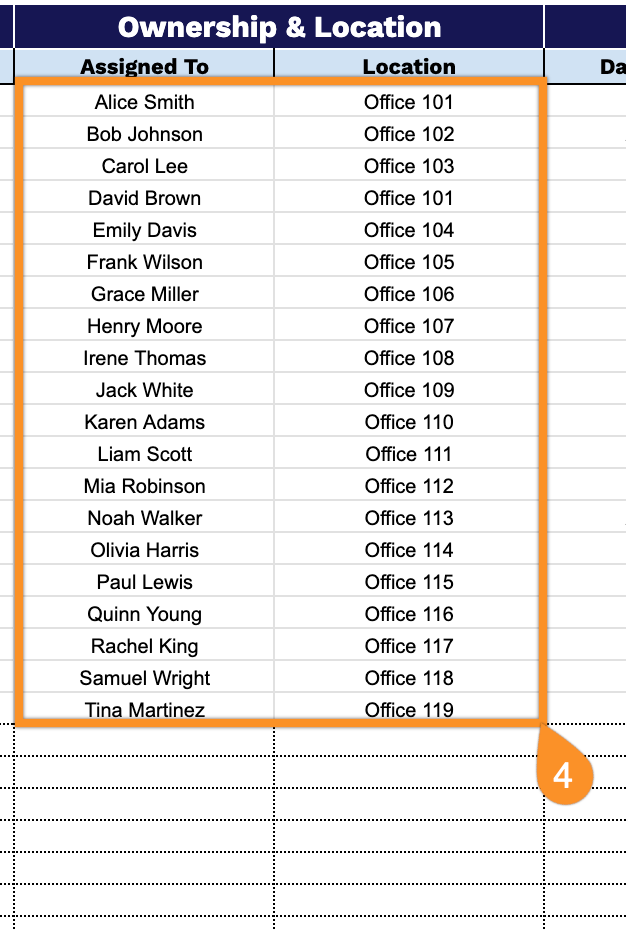
5. Document the financial information in the Purchase & Warranty Information section for cost tracking and coverage management:
- Date Purchased: Specify when the organization originally acquired the device
- Supplier: Record the name of the vendor or retailer from whom the device was purchased.
- Purchase Price: Include the original cost paid for the device to track depreciation and plan for replacement.
- Warranty Information: Document warranty coverage details, including expiration dates and service level agreements.
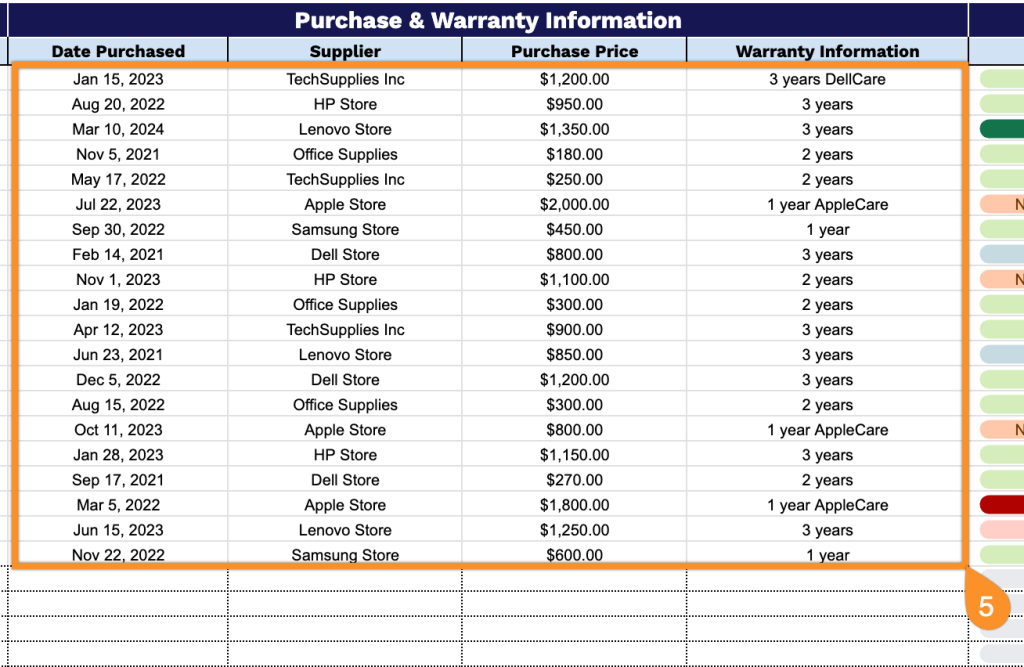
6. Monitor device health in the Maintenance & Status section to ensure optimal performance and longevity:
- Condition: Assess and record the current physical and operational state of the device (new, good, fair, poor, needs repair).
- Next Service Due: Schedule and track upcoming maintenance appointments or required service intervals.
- Software Updates: Document the current software version and track pending or completed system updates.
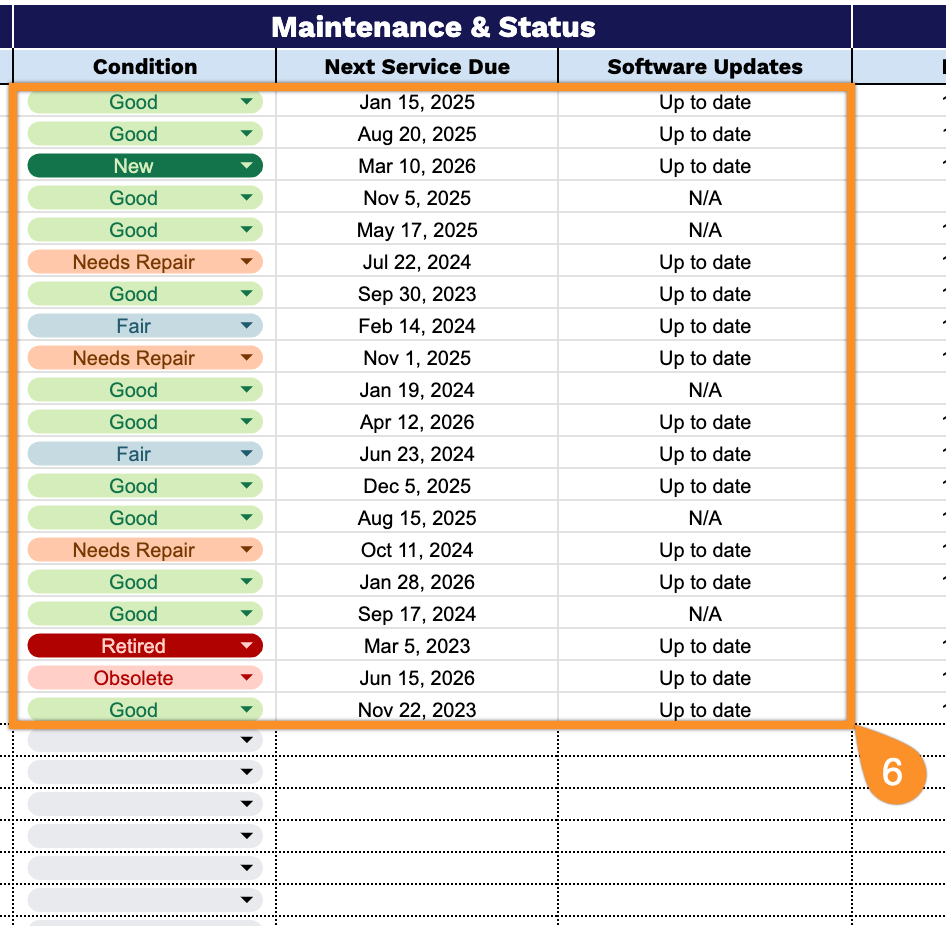
7. Manage connectivity and security in the Network & Security Info section for IT administration and compliance:
- IP Address: Record the assigned network address for devices connected to your organization’s network infrastructure.
- Security Software: Document installed antivirus, firewall, or other security applications protecting the device.
- License Keys: Store software license information and activation keys for installed programs and operating systems.

8. Use Notes to record supplementary data about this computer system, including any special considerations or observations.
